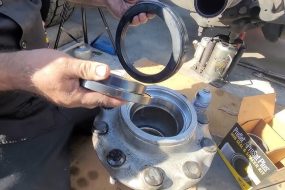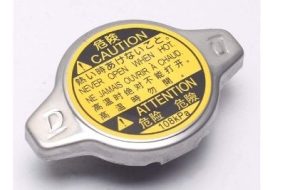
A head gasket is a part of a car engine that ensures there is an appropriate distribution of oil and engine coolant. It ensures the pressure within a car engine is sealed.
Having a bad or a blown head gasket can cause overheating and other problems to your vehicle. When these problems occur as a result of a bad gasket, it is better to have the head gasket replaced for your engine to continue working well.
However, what if you continue experiencing the same problems after head gasket replacement, what should you do and why did the problems continue after the replacement?
Can A Car Develop Problem After Head Gasket Replacement?
Yes, a car can develop problems after replacing a head gasket. Having to replace your damaged head gasket is expensive and time-consuming; some wealthy people will prefer a new engine, but if replacement is to be done, it needs to be done with extreme caution.
There are various reasons why your head gasket can cause you more harm than good, it can be the carelessness of the repairer or some missed out parts but be sure if things are not done right, you will probably get a lot of problems even after replacing the head gasket, sometimes worse problems, more than you expected.
Problems After Head Gasket Replacement
The major reason for a head gasket replacement is for the overheating problem and others to stop. If you’re still experiencing more problems after head gasket replacement, then something is still wrong somewhere.
It’s either the major cause of the problem might not have been fixed or some other things that needed to be checked after head gasket replacement were not checked and put in order.
For example, if you are still experiencing overheating problems after head gasket replacement problems, it could be the mechanic that did the replacement job did not follow the right steps during the replacement process. The best thing to do here is to take the car back to him to look into it and find where he missed it.
It can also mean that some other parts of the vehicle that should be inspected and replaced alongside the head gasket were neglected.
For example, the cylinder head itself must be inspected after head gasket replacement to ensure it is still in good shape otherwise, it will cause more harm than good even after replacing the head gasket.
The cylinder head should be properly torqued when re-installed onto the block with the new gasket in between. It is an important step to follow which should not be neglected.
Don’t think after replacing the blown head gasket, you are free to get going with your car. I will suggest you get your car checked again and again to attend to some minor repairs.
Replacing a head gasket will require dismantling the engine and setting it back up. During dismantling and fixing, some petty things like the timing belt, and water pump might get weakened or are weakened; a replacement should be done well in order not to cause the car to overheat after wasting time in completing the fix.
What to Do If the Problems Continue?
As reiterated earlier, if after replacing the head gasket and the problem continues, you need to check that the major cause of the problem was the one fixed.
What if the head gasket is not the cause of the problem in the first place? What if it’s other parts of the vehicle that is causing the problem. Take the vehicle back to the mechanic and have them look into the issue for you.
Moreover, I hope you’re not the type that cut corners with mechanics? Trying to use cheap mechanics that are not very good at their job. If this is the case, you need to take a decision and take your car to a professional mechanic who has been in the system for years to fix the issue for you.
There is no other solution to a faulty head gasket that is replaced but still appears faulty than to drive the car to a more experienced care doctor to have it fixed properly.
When problems appear even after a head gasket is replaced, it is likely an error from the mechanic probably when dismantling the engine or setting it up.
You shouldn’t blame him that much; replacing a blown head gasket will require more focus and attention to every part of the car. You need professional hands to get an excellent result.
Also, the mechanic should check if there are any other parts that need to be replaced alongside the head gasket for the issue to stop. Not putting that into consideration may cause the problem to continue even after head gasket replacement.
What To See in a Faulty Head Gasket Replacement?
Before a replacement, you should at least know why a replacement is important. Without this, you might major on a minor problem when what you need is just a little thing to get your car back in order.
1. White Smoke From Tailpipe
When there is a broken head gasket, coolants escape into the atmosphere and so they find their way out through the car exhaust, producing white smoke into the atmosphere which is dangerous to the car owner.
2. Milky White Coloration in the Oil
The common problem with a faulty head gasket is when it leaks. When a gasket leaks coolant passes directly into the oil system and then mixes, when this mixing occurs, it produces a milky substance that is clear enough to be noticed.
3. Engine Overheating
When coolant tanks leak because of a blown gasket head, it causes the car’s engine to overheat, which causes the coolant level to reduce beyond normal.
Now that you know what symptoms can cause getting a replacement, below are the problems you will probably encounter if you get a faulty replacement.
Conclusion
Problems after replacing your head gasket can be tiring especially if that car means so much to you. The best way to prevent such repeated problems is to use the services of a competent mechanic.
Replacing your head gasket is tedious work that requires competence and time. If done wrong, it will cause more problems than good and will be a total waste of your hours. You need to get this right to avoid mistakes.









